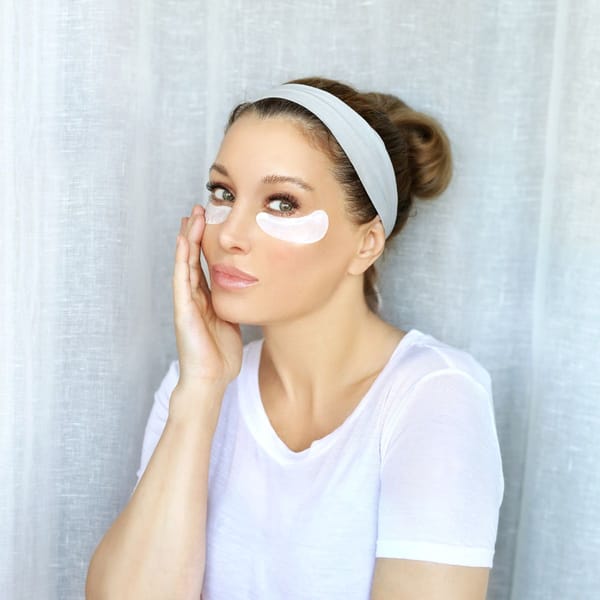Key Takeaways:
- Oil makeup removers can effectively dissolve water-resistant and heavy makeup, making them ideal for thorough cleansing.
- They are particularly beneficial for dry and sensitive skin types due to their hydrating ingredients and gentle cleansing properties.
- Personal preference and specific skin concerns should guide the choice between oil-based and other types of makeup removers.
Understanding Oil Makeup Removers
Cleansing oil makeup removers have surged in popularity, but what sets them apart? Essentially, these products, including cleansing oil, use natural oils to break down makeup, sunscreen, and excess sebum without stripping the skin of its natural oils. This method is not only effective but also ensures that the skin remains nourished and hydrated. Whether you wear light makeup or sport a full face of water-resistant products, a cleansing oil can tackle the challenge efficiently, offering benefits for all skin types and providing a gentle yet thorough cleansing compared to other products like micellar water and cleansing balms.
For those with dry skin, cleansing oil can be a game-changer. Unlike foaming cleansers that can leave the skin feeling parched, oil-based cleansers, especially cleansing oil, maintain the skin’s moisture balance. This is crucial in preventing the overproduction of oil, a common issue for dry skin types when the skin feels excessively stripped.
The Science Behind Oil Cleansing
The principle behind oil cleansing is based on the chemistry notion of "like dissolves like." Oils in the cleanser attract other oils on the face, including those in makeup and sebum, and these are then easily rinsed away. This method is effective in removing not just makeup but also surface debris and impurities that can lead to breakouts.
For individuals with acne-prone skin, the thought of applying oil to the face might seem counterintuitive. However, many oil cleansers are formulated with non-comedogenic oils that cleanse pores without clogging them. This can actually reduce acne breakouts by removing excess oil and keeping the pores clear.
Choosing the Right Oil Cleanser for Your Skin Type
Selecting the right cleanser is pivotal in any skincare regimen. For oily and acne-prone skin types, lightweight oils like grapeseed or jojoba can provide effective cleansing without contributing to oiliness. Sensitive skin types might benefit from soothing oils like chamomile or calendula, which gently cleanse while calming skin irritation.
It's important to consider the texture of the oil cleanser as well. Some people prefer a thick, balm-like consistency that melts into the skin, while others might opt for a lighter, more fluid oil. Experimenting with different formulations can help you discover which texture works best for your skin and makeup removal needs.
The Role of Natural Oils in Oil Cleansers
Natural oils are the cornerstone of oil-based cleansers, playing a pivotal role in their effectiveness. These oils, such as jojoba, coconut, and argan, are adept at dissolving makeup and excess sebum without stripping the skin of its natural moisture. This makes oil cleansers particularly beneficial for dry skin types, who often struggle with traditional foaming cleansers that can leave the skin feeling parched. By integrating natural oils, oil cleansers maintain the skin's hydration levels, providing a nourishing cleanse that supports the skin's barrier function.
Moreover, the compatibility of natural oils with the skin's own lipids allows for a deeper cleanse that is gentle yet effective. For individuals with sensitive skin, oil cleansers formulated with non-comedogenic oils can help minimize the risk of clogged pores and breakouts. These oils mimic the skin's natural sebum, helping to balance oil production and soothe inflammation. As a result, users can enjoy a clean, refreshed complexion without the harsh effects often associated with more astringent cleansers.
Double Cleansing: A Two-Step Approach to Flawless Skin
The double cleansing method has revolutionized skincare routines worldwide, particularly for those who wear heavy makeup or sunscreen. This two-step process starts with an oil-based cleanser to dissolve surface debris and break down water-resistant products. The initial step ensures that all oily residue and impurities are effectively removed, setting the stage for the second cleanser. This method is especially beneficial for acne-prone and oily skin types, as it thoroughly removes excess oil and prevents the likelihood of acne flare-ups.
Following the oil cleanse, a gentle foaming cleanser is used to soak up excess oil and remove anything left behind, ensuring all impurities are thoroughly removed without disturbing the skin’s natural moisture balance. This second step not only ensures that the skin is impeccably clean but also helps to rinse away any residual oil left from the first cleanser. By incorporating both an oil-based and a water-based cleanser, the double cleanse method promotes a more comprehensive cleaning that can enhance the overall health and appearance of the skin. Users often report that their skin feels softer, appears brighter, and maintains a healthier balance with regular use of this dual approach.
The Double Cleansing Method
Double cleansing, a method popularized by Korean skincare routines, involves using an oil-based cleanser followed by a water-based cleanser. This technique ensures that every trace of makeup and dirt is removed from the skin. Starting with an oil cleanser dissolves any oily impurities and makeup, preparing the skin for the second cleanser, which addresses any remaining dirt and impurities.
Incorporating double cleansing into your evening routine can dramatically improve your skin’s clarity and texture, especially if you regularly wear makeup or sunscreen. The first step with an oil cleanser addresses oil-soluble impurities, and the second step ensures a deep water-based clean, leaving your skin fresh and clear.
How to Use Oil Cleansers Effectively
To get the most out of your oil cleansing, apply the oil to dry skin using your fingertips. Gently massage the oil into your skin in circular motions, focusing on areas with heavy makeup. This massage helps the oil penetrate and lift makeup and impurities from the pores.
After massaging, emulsify the oil by adding a small amount of warm water. This turns the oil into a milky emulsion, which can be rinsed away easily, taking dirt, makeup, and excess oil with it. Follow up with a gentle water-based cleanser if you’re practicing double cleansing, or simply pat your face dry if you’re using the oil cleanser alone.
Personal Preference and Skin Concerns
Ultimately, whether an oil makeup remover is better depends on personal preference and specific skin concerns. Some might find oil cleansers too rich, especially if they have extremely oily skin, while others might appreciate the moisturizing benefits and thorough cleansing they provide.
Listening to your skin and understanding its needs is crucial. If you notice improved hydration, fewer breakouts, and smoother skin with an oil cleanser, it might be the right choice for you. Conversely, if you experience discomfort or increased breakouts, reevaluating your choice of cleanser might be necessary.
Summary
Oil makeup removers offer a gentle yet effective way to cleanse the skin, particularly beneficial for those with dry or sensitive skin. By understanding the specific needs of your skin type and experimenting with different products, you can leverage the benefits of oil cleansing to maintain healthy, clear skin. Remember, the best skincare regimen is one that you can stick to consistently and that addresses your individual skin concerns.
FAQ
Q: Can oil cleansers cause breakouts? A: While it's a common concern, many oil cleansers are formulated with non-comedogenic oils that are designed not to clog pores. For acne-prone skin, choosing the right oil and formulation can actually help prevent breakouts by keeping the pores clear of excess oil and debris.
Q: Are oil cleansers suitable for all skin types? A: Oil cleansers can be beneficial for most skin types, but the key is choosing the right type of oil and formulation for your specific skin concerns. For example, lighter oils are better for oily skin, while richer oils might be more suited for dry or sensitive skin.
Q: How often should I use an oil cleanser? A: You can use an oil cleanser as part of your daily skincare routine, especially in the evening to remove makeup and sunscreen. If you're using the double cleansing method, an oil cleanser should be used first, followed by a water-based cleanser.







